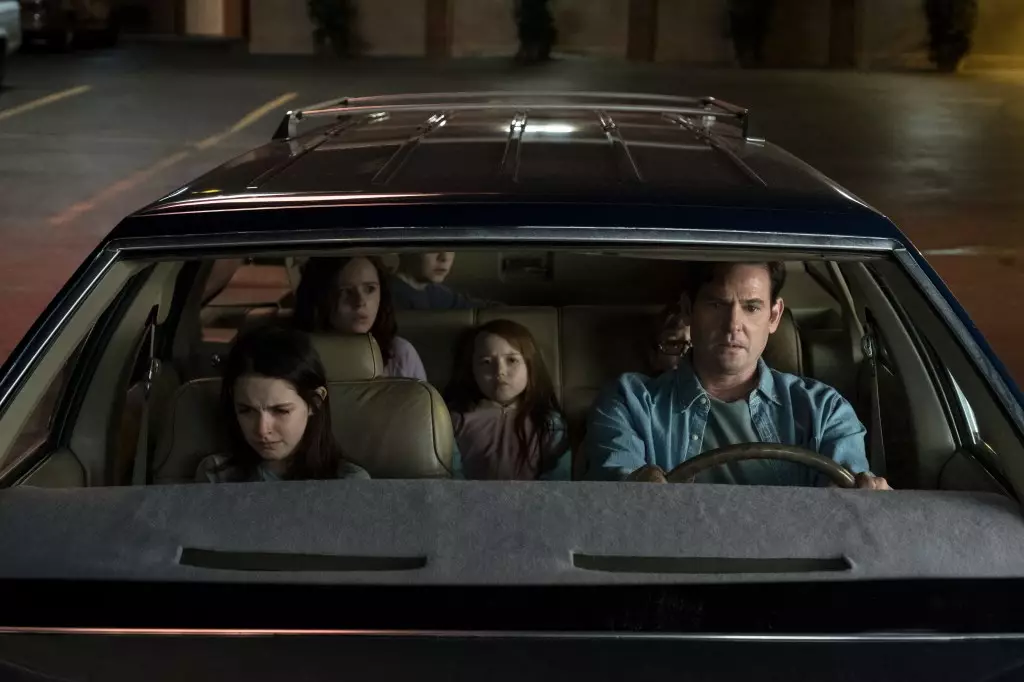Mike Flanagan, the acclaimed horror director best known for masterpieces like *The Haunting of Hill House* and *Doctor Sleep*, has revealed an extraordinary insight into his creative process: his work is, in many ways, a balm for his own wounds. Speaking at the inaugural SXSW London event, Flanagan candidly recounted how the painful loss of a family member propelled him into the depths of storytelling as a coping mechanism. The grief that followed a tragic suicide became intertwined with the narrative of *The Haunting of Hill House*, particularly in the portrayal of Nell Crain’s own harrowing journey. Flanagan noted, “There are images in that show that are dreams and nightmares I had during that time.” This level of vulnerability emphasizes how art allows for the processing of unimaginable pain—an outlet that not only aids the creator but also offers solace to audiences grappling with similar scars.
Flanagan’s ability to transform personal anguish into compelling narratives is not merely a clinical exercise; it’s a profound testament to the therapeutic power of art. His creative endeavors have served as a bridge, allowing him to communicate the incommunicable aspects of grief and to share these experiences with viewers who are also seeking understanding or healing. By exploring these themes in his work, he opens up discussions on mental health, making it accessible and relatable for many.
Breaking the Stereotypes of Horror
During his talk, Flanagan addressed a pervasive attitude towards the horror genre: the idea that it is somehow lesser or merely disposable entertainment. “There’s a bias against horror,” he stated, pointing out that this perception often shifts with the arrival of critically acclaimed projects, such as those crafted by directors like Jordan Peele. Flanagan argues that the horror genre deserves respect, asserting that it has richly layered narratives and complex character developments reminiscent of more traditional forms of storytelling.
This claim serves as a call to action for both creators and audiences. Flanagan articulates that horror is an often-misunderstood genre that stands as a valid form of artistic expression. He encourages those outside the genre to recognize and appreciate the depth that exists within these narratives—a challenge given how frequently cliché scares overshadow the emotional subtleties presented in standout films. “People outside the genre remain perpetually surprised that there is a really good story here,” he noted, suggesting an undercurrent of frustration that the richness of horror is often overlooked.
The Artistic Synergy with Stephen King
Flanagan’s connections with revered horror writer Stephen King further enrich his creative narrative. While many view King as solely a “horror writer,” Flanagan offers a deeper perspective, labeling him a “gooey-hearted, lovely humanist.” This observation points to a significant theme within King’s work: the exploration of human nature through the lens of horror. Flanagan emphasizes that the fear elements arise organically from well-developed characters rather than existing solely for shock value.
This collaborative relationship not only signifies a blending of visions but also underscores a pressing reality in adaptations: successful storytelling transcends genre limitations. It reveals how central themes of love, loss, and friendship can coexist with horror, crafting an empathy that elevates the narrative beyond mere fright. Flanagan’s insights on King’s storytelling artistry reiterate the value of emotional resonance, allowing for a deeper connection with both the characters and the audience.
The Deteriorating Art of Monologue
In addressing the future of film and storytelling, Flanagan made an impassioned argument for the preservation of the monologue, which he sees as “a dying art.” He points out how modern storytelling, influenced heavily by streaming services and fast-paced entertainment consumption, often opts for brevity over depth. “There is nothing more impressive than watching an actor completely change reality with just words,” he asserted, highlighting the power of language in narrative forms. This perspective is essential in an era where visual spectacle frequently trumps substantial dialogue.
Flanagan’s strong advocacy for the monologue reflects a broader cultural phenomenon—a tension between the demand for fast-paced content and the timeless value of drawn-out, thoughtful conversation. His dialogue highlighted a creative struggle: balancing artistic integrity with commercial pressures. Flanagan’s assertion that monologue retains artistic merit serves as a vital reminder of what can be lost in the pursuit of expedience.
As Flanagan continues to explore the intricacies of horror, grief, and human connection, his work stands as a beacon for creative individuals navigating their own tribulations while simultaneously crafting compelling, therapeutic narratives.

